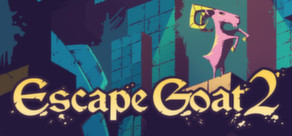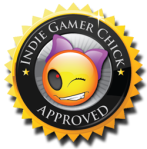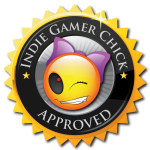The Storied Sword (NES Indie Review)
March 28, 2024 2 Comments
 The Storied Sword
The Storied Sword
AKA Project Sword
Platform: Nintendo Entertainment System
Developed by Bite the Chili Productions
Music by Raftronaut
Coming Soon to the NES
The Storied Sword at itch.io

I’m not the biggest Princess Bride fan. My parents are, so when I saw this screenshot and said “oh cool, a Zorro game” I was disinherited. Seems a little harsh, but I’m not worried. There’s no way they’ll manage to file the proper paperwork before the poison takes effect.
Attention Please: I’ve never had to open a review with a disclosure like this before, but here it goes: this game ain’t out yet, and it’s still technically in development. In fact, it’s going to be part of a Kickstarter campaign shortly after this review goes live, and this review is hitting before they’ve even announced a release date, as far as I could tell at least. The Storied Sword is mostly finished, but there’s a strong chance I might have to do an update to this review in a few months. I don’t want to make a habit of reviewing games this early, but I had such a good time that I felt like writing this up. This is NOT an endorsement of the crowd funding campaign. This is a game review. If you like what you see and read, go ahead and head over to the campaign page. All I care about is how good the game is. Spoiler: pretty dang good.

Ninja Gaiden fans will want to pay attention to this one. Batman NES fans too, though I’m not very familiar with that one as of this writing. Thankfully, they’re not talking about the PC Engine Batman.
So yea, this is Princess Bride with the serial number filed off and built around an engine that’s sure to remind players of NES games like Ninja Gaiden or Strider. On paper, that sounds like it could have a problem standing on its own merits, but thankfully Storied Sword is a very good indie. One that I wish did a little more than it does, but I’m very happy with the time I put into it nonetheless. Ninja Gaiden really is the closest cousin to it, especially if you play as the male hero. Cedric, who is most certainly NOT Cary Elwes (the fact that this is a quality production in the 2020s should have told you that), has a nifty little horizontal sword slice that’s straight out of Ninja Gaiden and sure to satisfy. You can power-up the sword once via shattering the right vases in the levels, and doing so adds a little sonic wave to your attack that increases your range. That’s where the Strider comparison comes from, as it looks like a scaled-down version of that game’s attack. Meanwhile, Orchid, the female character, has a vertical slice instead. Remember the Lion in Wonder Boy: The Dragon’s Trap where its special animal super power was acknowledgement that upwards is a thing that exists? That, only with less fur and more breasts.

Is it just me, or does the bad guy underneath me look like Hank Scorpio from The Simpsons?
Does this actually make any game play difference at all? Yes, but it’s so subtle that it took me four full game sessions to verify to myself it wasn’t the placebo effect, AND EVEN THEN, I needed to verify what I observed with the developer. Orchid’s extra range mostly works from a defensive point of view. Almost all the enemy projectiles can be stopped with a correctly timed swipe of the sword, and Orchid simply covers more area with her sword swing. To balance this, she gets a smaller max health bar than Cedric. Small enough that she’ll die instantly from any contact with spikes, while a fully healthy Cedric can survive one shot from them. To be honest, I’ve never seen any game that measured a character’s health bar based on the damage spikes do, so points for originality. Since spikes are a constant nuisance, bordering on being the primary hazard of the entire game, I preferred using Cedric even with his weaker range.

BUZZ! This screenshot clearly shows a violation of the “no pointy things in the background that don’t kill you in a game where pointy things kill you rule.” Section 19, Paragraph 3. Check it yourself. The developers owe me two laps around a track.
Another difference that makes Cedric my preferred character is that he has the better starting sub weapon. You hold UP and press B to throw it, just like Ninja Gaiden or the NES Castlevanias. Cedric has a throwing knife while Orchid has a boomerang. Orchid’s boomerang is probably the least satisfying attack in the game. All the weapons have full screen range except her boomerang, and since it moves so quickly and one shot kills most enemies, the return effect I found to be rarely useful. Maybe it would be if you regained the item point you have to use to throw it, but you don’t. Then there’s Cedric, and on my first usage of his throwing knife, I was just a little off, but it worked out for me anyway. The knife flew over the enemy’s head, hit a wall, then ricocheted off and killed him. I didn’t know it did this and I literally let out a cheer when it happened. It was awesome! Even better was that there are several spots in the game where, if I didn’t know better, I’d swear they placed enemies specifically to take advantage of the ricochet.

You can tell these guys really hated the ravens in Castlevania, because they’re a primary enemy in Storied Sword. There’s a big variety of them, to the point that birds got their own section in the instruction manual.. which is immediately followed by a recipe for chicken. Yes, really. That’s darker than I was expecting.
It’s too bad I usually didn’t have my throwing knife. If you pick up one of the other two sub-weapons, you lose the throwing knife and don’t get it back until you die. It’s never in one of the vases you break. I really wish they’d made it so you could swap between all the different sub weapons you’ve collected. The ability to SELECT them if you will, but I understand that doing so would require some sort of SELECT-specific button. It’s not like the NES would have thought to include such a button before we reached the space age we live in now with our flying cars and hoverboards. At the very least, allow swapping for the starting weapons, since those are unique to each character. Yes, it’s petty and nitpicky, but hey, when you make a damn decent game that does so little wrong, you invite this kind of shallow yet vindictively petty criticism.

See where I’m standing? I threw the boomerang, but it stopped just short of killing the guy in front of me. You can see its max range right next to his face. With her, I preferred the throwing ax, though it costs a whopping three points to use (UPDATE: Actually, the book says 3 points, but it’s really 2 points.) Oh, there’s item points that are random drops from enemies. I guess this attack specifically is the Batman NES tribute.
As for the basic attacks, even without the ability to aim them, they’re satisfying enough on their own to carry the game through six levels without ever growing old. This is true even if you’ve not picked up the one and only upgrade for the swords, and this is owed to a healthy variety of enemies and the fact that the studio wisely didn’t make them spongy. This is an action game, as classic and clichéd as it gets, though in the best way possible. If I have to complain, and I totally do, it’s that the enemy placement is often done in a way to cause maximum annoyance. On the normal difficulty, Storied Sword’s challenge relies on placing enemies on platforms with edge-of-ledge jumping, or at the top of a tall wall jumping sequence. Usually, those lethal-ass spikes will also be involved. I swear if I actually owned the NES cart, the thing would say “stop hitting yourself!” during these sections.

Storied Sword has no “absolute last pixel” jumps that I noticed. Instead, the emphasis is more on jumping accuracy. Thankfully, Bite the Chili fine tuned the leaping physics. They’re a joy to use because I quickly stopped thinking about them and just acted by instinct. That’s the mark of a great platformer.
Maybe they did go a bit overboard on the cheap enemy placement. But, and I can’t stress this enough, it’s never a deal breaker, especially since you have unlimited lives. Storied Sword instead utilizes a post-game death counter and tells you your completion time. There’s also adjustable difficulty, but I think NORMAL should be fine for most people. (UPDATE: The EASY mode has less knock-back. To be honest, I didn’t think the knock-back on NORMAL was that bad.) On the hard difficulty (which must be unlocked), check points seem to be fully removed. BUT, the challenge is not insurmountable and the action is never tedious. I’m not a fan of Ninja Gaiden at all (probably, I really need to get around to reviewing them). But I really liked the swordplay in this, basic as it is. It’s not easy to have a game go six levels without the action losing a bit of its zing, so I was impressed. Of course, combat alone wouldn’t have been enough to get Storied Sword over the finish line. If the levels were boring, it would have been all for naught. Thankfully, that’s not the case.

The swordplay IS a little let-down in the boss fights, but that might not be true of the version that’s ultimately released. The sound design for Storied Sword is 95% pretty good, but in the version I played, the sound for striking a boss was so wimpy that I wondered if it meant that my hits were being either blocked or not landing “the correct way.” That wasn’t actually the case. The version that reaches customers might have a different sound effect. Speaking of bosses, there’s seven of them that ranged from fine to inspired. The battles that make-up the last boss functioned exactly how a last boss should: as a chef’s kiss. I don’t want to spoil it for you, so I’ll just say, I was a smiley, happy Cathy. Very good.
Where the game really shines is in the jumping physics and level design. See, despite the swordplay, the action in this game isn’t fully combat focused. In fact, most of the game is tailored around platforming and especially the wall jump ability. While the combat is a direct homage to Ninja Gaiden, the use of interacting with walls doesn’t feel like Ninja Gaiden at all, and thank god for it. That’s the part I hated about those games. Bad wall physics can ruin the whole experience if developers don’t put the time in to fine tune the controls for it. I’m happy to report that Storied Sword’s wall jump is one of the most intuitive and practical I’ve encountered. I think the developers realized they nailed it too, because the whole game is built around it. In fact, their placement of platforms and walls turn Storied Sword into something resembling an acrobatic puzzler at times. You get a tiny extra nudge over a standard jump when you use the wall jump, and they made the most of this multiple times throughout the game.
It’s not a gameplay gimmick that the developers stuck in one or two spots and called it a day. There’s even sections where you have to just walk off a platform, then turn around and kick off the platform you were just on. Again, some bullish enemy placement can sometimes sour the exhilaration, but for the most part, this feels very modern in terms of accurate play control and reliable jumping physics. It turns Storied Sword from a heartfelt tribute specifically made for Ninja Gaiden fans (or Princess Bride fans, for that matter) into a game that’s genuinely doing its own thing. And it does its own thing quite well. By the end of the game, you’ll face tall climbing sections that have timed spikes coming out of the wall, but Storied Sword has done such a good job up to this point that I instinctively knew how much hang time I would get and all the places on the wall I could land. I ended up clearing what felt like a tough section on my first try without cheating, and it felt great! It’s a surprisingly intense game, and while I won’t say it never overwhelms, it never feels like it’s just trolling for the sake of trolling.

This section is such an example. The player should instinctively know this is not something your jump can handle. There’s not enough clearance. Instead, you have to walk off these platforms and use the wall jump so you don’t just hit the ceiling and fall down to your doom.
My biggest complaints about Storied Sword are what’s NOT in the game. I had so much fun playing its six levels that I wish there were just a couple more. I wish there were more sub weapons. What’s here is fine, but a couple more would have been cool. I also wish there were more collectables or secrets, or any at all. I smacked every single wall with weapons and found nothing. The game doesn’t necessarily hurt for the lack of them, but I also admit that if I wasn’t reviewing this, I wouldn’t have played it a third and fourth time. With level design this strong, the game was practically begging for hidden bonus collectables, and they’re nowhere to be found. I think of Garbage Pail Kids and how enjoyable finding all the cards was, or getting all DK logos in the Donkey Kong Country games. The gameplay lends itself to exploration, but there’s almost no exploration in Storied Sword. They certainly have a good foundation to build off of if they ever want to go that route. This is where the Princess Bride tribute part of the equation might actually hurt it more than it helps, because they’re limited to recreating set pieces from the film. I really hope Bite the Chili follows this up with a fully original game that uses an advanced version of Storied Sword’s gameplay, because this gameplay slaps. It’s just a very charming, likable game that feels both authentically NES-era, but just modern enough to work for players of all ages.

Princess Bride fans will giggle at the set pieces for sure.
I’m sure everything that feels like it’s missing is that way because Storied Sword is a completely linear game. The levels are laid out in a way that leaves little room for exploration. I’m okay with that. Hell, that’s Castle of Illusion, and nobody argues against it being an all time classic. You’ll probably beat the game in around an hour, ninety minutes at most, on your first go around. That can be shaved down quite a bit. I think speed runners will especially enjoy this one. When I cheated, I finished the game in just under thirty minutes, and I messed around so much I was kind of stunned when I saw the final time. I’m fine with a short game, by the way. There’s TONS of games to play out there, so it’s not like I’ll be hurting for something to do. But, Storied Sword right now offers little in the way of replay value if you’re not a speed runner. There’s “achievements” but that will never be as satisfying as collectables or hidden secrets.

Since granting neo-retro licenses is all the rage these days, I really hope Nathan scores his dream license. He’s certainly got the talent to do a big tentpole neo retro licensed game.
 While the lack of replay value is a mild downer, even if that type of thing matters to you, I’d still say this is worth a look. I don’t even have to think twice about it. Everything Bite The Chili Productions and Raft Labs Interactive had to get right? Needless to say, they got it right. Excellent gameplay mechanics. No collision issues. Satisfying combat. Intuitive jumping. Fantastic level design. One of the best 8bit wall jumps I’ve experienced. Boss battles that feel important and climatic, and one of my favorite last bosses in a game of this type ever. I’m open to the possibility that, like Böbl before it, the developers realized they had a fantastic NES game and decided to walk away winners. And that’s fine if it’s true, by the way, because Storied Sword is non-stop fun for the full length of the game. There’s nothing cynical about it. This is a labor of true love, and that doesn’t happen every day.
While the lack of replay value is a mild downer, even if that type of thing matters to you, I’d still say this is worth a look. I don’t even have to think twice about it. Everything Bite The Chili Productions and Raft Labs Interactive had to get right? Needless to say, they got it right. Excellent gameplay mechanics. No collision issues. Satisfying combat. Intuitive jumping. Fantastic level design. One of the best 8bit wall jumps I’ve experienced. Boss battles that feel important and climatic, and one of my favorite last bosses in a game of this type ever. I’m open to the possibility that, like Böbl before it, the developers realized they had a fantastic NES game and decided to walk away winners. And that’s fine if it’s true, by the way, because Storied Sword is non-stop fun for the full length of the game. There’s nothing cynical about it. This is a labor of true love, and that doesn’t happen every day.
Verdict: YES!
A Review Copy was provided in the making of this review.
The Storied Sword will be re-reviewed if a substantial patch is applied.






















You must be logged in to post a comment.